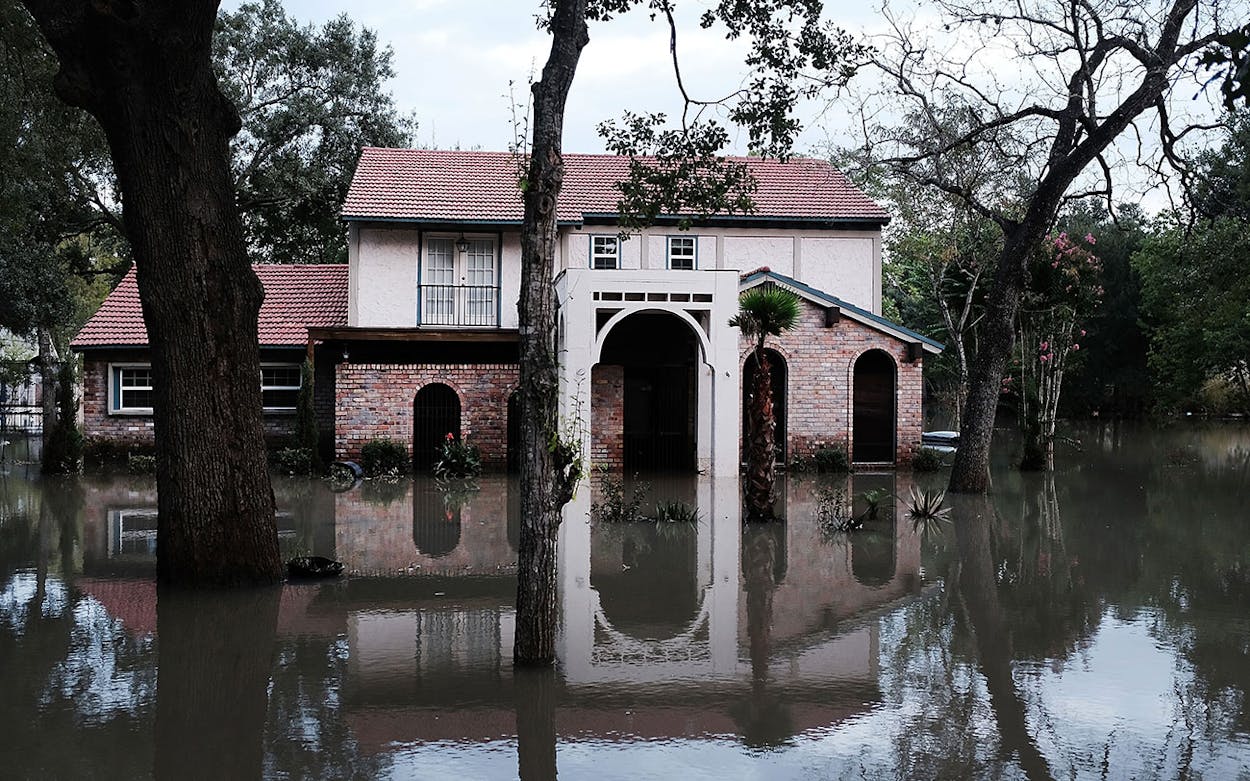Editor’s note: A quote from Dr. Andrew Dessler has been updated for clarity.
At this point, there’s been plenty of theorizing on why Houston flooded. The answers are fairly routine: Houston’s flatness, its lack of drainage, and the fact that the unzoned and over-developed metropolitan area contains too much pavement and too little land to soak up rain water.
But for atmospheric scientists, there’s another, far more ominous explanation to consider. In a mere 48 hours, Harvey went from a middling tropical storm, with winds of 45 miles per hour, to a Category 4 hurricane, with winds of 130 miles per hour. When it hit land, it dumped close to 50 inches of rain on Texas, which makes it the biggest rain storm in U.S. history. “There are many explanations for Harvey’s rampage,” Dr. Andrew Dessler, a professor of atmospheric science at Texas A&M in College Station, said. “But human induced climate change definitely made the storm worse.”
Scientists like Dessler, who has been studying climate change for twenty years, have long warned about the impact of global warming. They have patiently explained, over and over, that when too much carbon dioxide is added to the atmosphere, the earth’s heat is trapped, making it harder for energy to be sent radiating into space. According to the scientists, most of that trapped energy goes into the earth’s oceans. If carbon dioxide levels stay the same or get higher, the ocean water itself eventually gets warmer.
Few bodies of water have heated up like the Gulf of Mexico. As a result, when a tropical storm passes over the Gulf, those warm waters become pure fuel for that storm to tap. What’s more, because the temperatures in the atmosphere over the Gulf are also warmer, more ocean water is evaporating and hanging in the air, just waiting to be swept up by a storm and dumped over land as rain.
“We’re not saying that climate change is creating more tropical storms or hurricanes,” said Dr. Daniel Cohan, an atmospheric scientist and professor of environmental engineering at Rice University in Houston. “But what’s becoming clear is that once these storms form, they are likely to become much more intense.” Cohan noted that in the past three years, Houston has been hit by three so-called “500-year storms.” “The chances of that happening by coincidence are just about zero,” he concluded.
Cohan even speculated that global warming was the reason Harvey stalled over southeast Texas. “We know that with climate change, as the world gets warmer, the jet streams are now moving away from tropics and moving closer to the poles,” he explained. “What happened in Harvey’s case is that the jet stream wasn’t out there to push the storm along. It had moved north. I think for that very reason we’ll see more of these hurricanes stall over land, which means more devastating monster rains.”
In early 2005, several months after Hurricane Charley unexpectedly swept across Florida, Cohan was attending an academic conference of atmospheric scientists where a fierce debate broke out over the link between global warming and hurricanes. “Scientists were standing up and heatedly challenging one another, which never happens in one of those kinds of conferences,” Cohan recalled. But now, Cohan acknowledged, that debate is over. “The only question today is just what is coming next,” Cohan said.
As scientists, Cohan and Dessler are too measured to issue particularly dire warnings about the future of hurricanes in the age of global warming. They don’t talk in apocalyptic terms about more hurricanes rampaging up and down the Gulf Coast, causing billions of dollars more in damage. They don’t predict that the federal government might tire of providing disaster relief funds to coastal residents, or that mortgage companies might stop providing loans for their homes and businesses. They don’t mention that someday, coastal lands might largely be uninhabited.
But Cohan did point out that as long as there’s little commitment from countries, especially the U.S., to follow the Paris Climate Accord—which aims to limit the rise in global temperatures to 2 degrees Celsius (or 3.6 degrees Fahrenheit) for the rest of the century—“then our best case scenario is that we’ll have perhaps twice as much warming as we have now. Think of what a hurricane could look like in the Gulf of Mexico with that kind of warming.”
“If Harvey is not a wake-up call for us to reduce the man-made warming of the earth, I don’t know what is,” Dessler added. “It flabbergasts me that people are still denying what’s right before their very eyes.”








